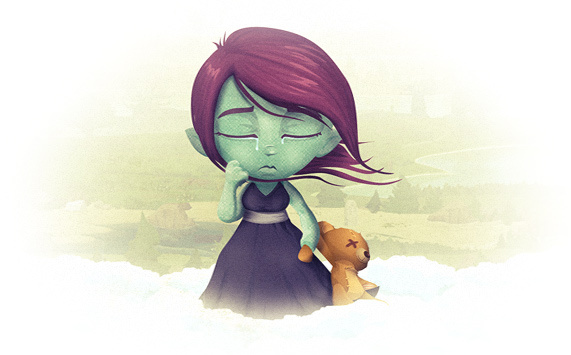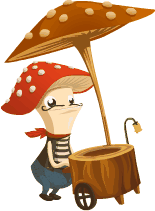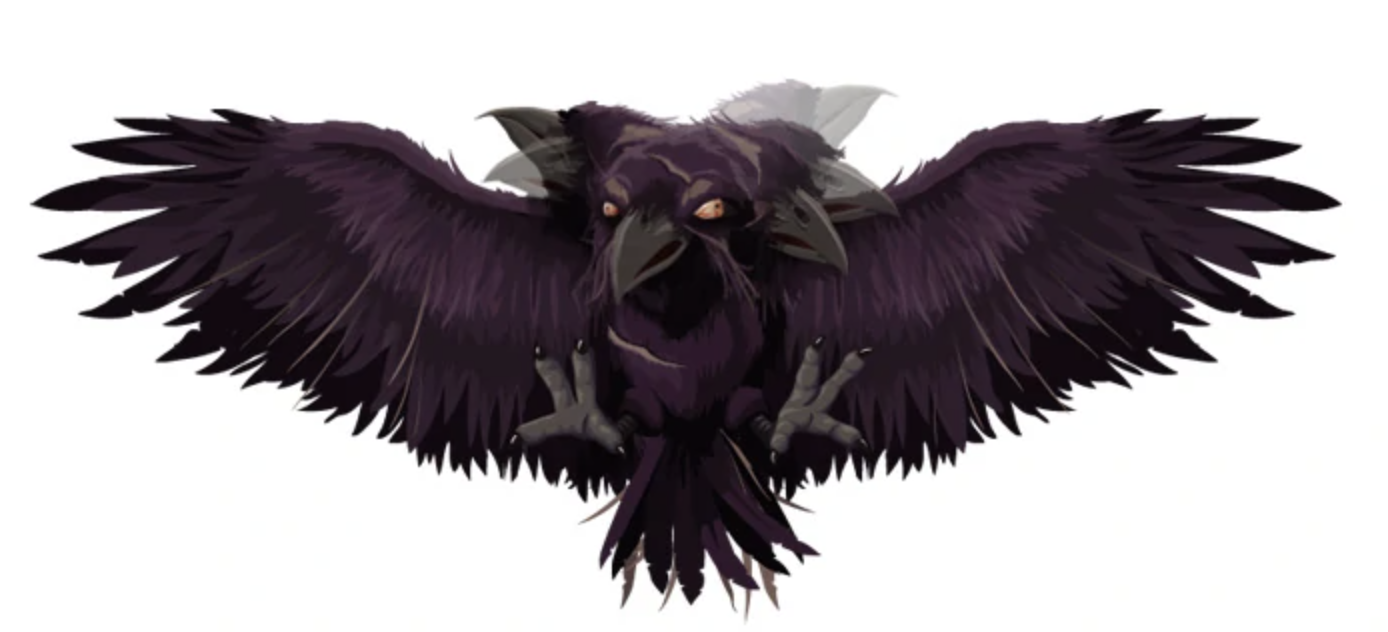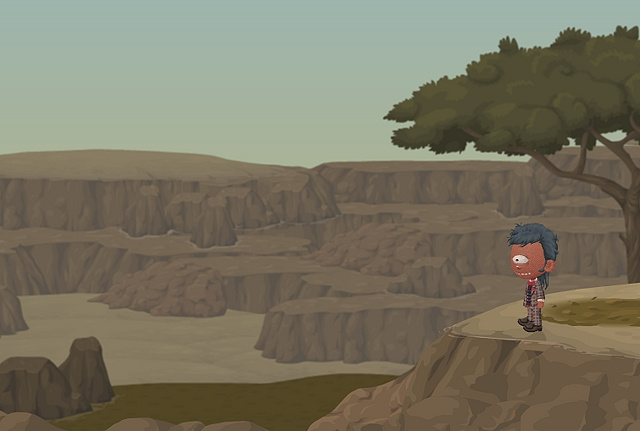The death of Glitch, the birth of Slack

“We have to shut down the game.” Stewart Butterfield said to me. I looked at him out of the corner of my eye.
He looked exhausted. The result of years of long days and short nights pouring all of his substantial creative energy into Tiny Speck and the game it was conceived to create: Glitch.
He also looked resolved. He had tried every option he could think of to keep Glitch alive: alpha and beta releases, launches and unlaunches, new features, a completely overhauled new player experience, elaborate collaborative modes of play, invite campaigns, generous credits to existing players, and clever storytelling in the press.
None of it was enough.
The quirky game populated by a far-flung community of players had absorbed his time since 2009. The company had attracted a team of 40 artists, engineers, game designers, animators, musicians, writers and in-game guides to build and tend to the world we had collectively imagined.

It was now late 2012. On a chilly November morning, Stewart and I walked along the seawall in the politely trendy neighbourhood of Yaletown. I was surprised by his invitation when I arrived at work that morning – I had joined the company 8 months earlier and was not accustomed to walks with our charismatic CEO.
He explained that despite all of our efforts, there just wasn’t a viable business for Glitch. It was expensive to build and keep online, and we had not attracted enough players to bear that expense. Moreover, with the rise of smartphones and the incompatibility of our Flash-based game with mobile, we didn’t have an easy way to meet new players where they were spending their casual gaming time.
“If we keep going as we are, we’ll burn through the rest of our money in a few months and be left with nothing to show for it,” Stewart explained. We walked in silence for a few paces, the low clouds dull and drizzling overhead.
I hunched into my rain jacket as I realized what this meant. My colleagues and I without a job. Tens of thousands of players abandoned. Hundreds of thousands of hours of collective creative work lost. Another failed startup. Fuck.
“But if we stop now, we can use that money to build something else,” Stewart went on. “I think the tools we’ve built internally could be useful to other people.”
“Our IRC server?” I asked, feeling a combination of skepticism and confusion. Why would a game company make chat software? And why would anyone pay for the unpolished conglomeration of tools we had glued together to solve our own problems?

When I joined the company, I’d been given a crash course in how we worked together on my first day. No email. Everything happened in IRC: a chat protocol from the late 80s. We had a server set up with channels based on topics of discussion: #general for company-wide chat, #deploys for new code releases, #support-hose for inbound customer support requests, and so on.
Alongside this we added a few other things we needed. A simple FTP server which posted uploads into the #files channel. A system that wrote our chat logs to a database so we could search them and read old archives.
A set of integrations that posted updates from other systems into IRC: whenever a new user signed up for Glitch, or bought credits, or wrote in for support, it showed up in a channel. Whenever we deployed code, or got a new review on the App Store, or tweeted from our Twitter account, it showed up in a channel.
Taken together, this allowed us to communicate in real-time, share files, find anything we’d ever talked about at the company, and keep track of everything happening with the business – all while avoiding the unique 21st-century hell of email reply chains and fragmented organizational knowledge.
At first it felt awkward, but within a couple weeks I couldn’t imagine using anything else.
It was a system only a nerd could love. It was quirky and technical. Most things didn’t have a GUI – instead displaying everything in text. You had to set up your own clients or bookmark webpages for each of the subsystems. It was held together with custom scripts and cron jobs and ugly SQL queries. It worked just well enough to serve our needs, but no more. Every ounce of energy we had was going into trying to make the game successful. These tools were a means to an end.
Without missing a beat, Stewart launched into a reasonably well-rehearsed pitch. “It’s all your team’s communication in one place, synced, searchable, and available wherever you go.” With one system we would replace email and basic file hosting, and allow a single point of integration for all of a team’s messaging needs: both between humans and between people and computers. “We’ll get rid of all the stuff we’ve duct-taped together and start fresh, but keep everything we’ve learned,” he said.
“I’m thinking of calling it Slack,” he added, making a gesture as though gently pulling and loosening a string between his thumbs and forefingers. “We can come up with a better name later.”

Stewart and his co-founders Cal Henderson, Eric Costello, and Serguei Mourachov had made up their minds to close the game and embark on something entirely different. He had already pitched this idea to our investors and they were on board – a sign of their continued belief in his leadership and track record of correctly predicting trends.
It sounded crazy to me. But I had also seen enough in my brief time working with the four of them to sense that if anyone could pull it off, it might be this group.
“We’re asking a few people to stay on. I’d like you to join us.” Lacking anything insightful to say, or any other handy job offers, I accepted.
“Good. But before that, let’s get a web page up so that we can get everybody another job.”

Glitch was an unusual, clever, heartfelt game. Within the realm of Ur, dreamt by eleven magical Giants, players created playful new identities for themselves. They designed and clothed their avatars to their heart’s content, delighting in new hats and a rainbow of possible skin tones. They crafted working music boxes and decorated their architecturally-unlikely homes.
They planted and grew gardens and milked the local butterflies. They collected pull-string dolls of modern philosophers – including plausible Nietzche and Wittgenstein quotations. They climbed into enormous dinosaurs, passing through their reptilian intestines and out of their helpfully sign-posted butts.
It was, in a word, preposterous.
It also meant a great deal to those who discovered and adopted it. It was an online place with a unique community. Glitch’s players identified with the game’s pervasive sense of humour, its gentle pace, and its weirdness. Mostly, they identified with each other and came to pass the time and make something new together. There was no way to win the game. And because of that, you couldn’t lose.

It was Butterfield’s second attempt to make an online game. In 2002, he and the co-founders of Ludicorp had launched Game Neverending, a similarly lighthearted game that allowed players to traverse a simple map, visiting obscure locations and leaving notes for others. It built on the mechanics of earlier eras of text-based networked games, but focused on the emerging possibilities of new spaces for social online play. Though Game Neverending and its esoteric goals were shelved after a couple years, an offshoot of the effort would lead to the team’s first major commercial success: Flickr.
In the early aughts, the combination of growing availability of consumer-grade digital cameras and home internet connections provided an opportunity. Flickr was created to allow people to upload and share their photos on the web – something taken for granted today but novel at the time. This was an era before the dominance of social networks (Facebook had yet to hatch across American college campuses) and smartphones (three years before the iPhone, when most Blackberries had abysmal cameras and worse cellular bandwidth).
Recognizing this opportunity and sensing the transformative potential of popular access to digital photography, Butterfield and the Ludicorp team launched Flickr in early 2004. Digital photographers flocked to the platform, rapidly making it one of the largest photo-sharing sites on the web. They built enduring communities around camera gear and common interests. People tagged their photos, added annotations, and – miraculously by today’s standards – had substantive and generally positive conversations in comment threads.
For a while, Flickr became the de facto photo layer of the internet: powering blogs, institutional collections, and enabling pro photographers to share their work in full resolution. The combination of timeliness, superb user-centered product design, and the nurturing of a new community resulted in a hit. Flickr became an essential part of the “Web 2.0” renaissance in the wake of the dot-com bubble.
Flickr’s success quickly attracted acquisition attention from other consumer Internet companies: Yahoo most of all. In 2005, Yahoo acquired Flickr for about $25 million dollars, incorporating it into their eclectic portfolio of web services and replacing the nascent Yahoo Photos product.
For a period, Flickr continued to grow and thrive, rapidly expanding to tens of millions of users. The growing prominence of smartphone cameras brought a new type of mobile-first photography to the platform, and the continued investment in the community by pros using high-end gear cemented the site’s importance for serious photographers. The site’s “Interestingness” algorithm surfaced the most compelling content to draw in new users.

But Butterfield was miserable. Yahoo’s idiosyncratic and sprawling set of online properties and incoherent response to changing trends left Flickr adrift. Yahoo’s search business was being decimated as Google’s engine redefined online search. Two enormous shifts in people’s online behaviour – to social media and mobile phones – were largely missed by Yahoo. Sharing and tagging photos on Facebook became one of its killer features, and the centerpiece of much of its early viral growth. Flickr’s position in the marketplace was reduced as these trends swept the Internet and drove people’s attention away from websites toward social networks and apps.
As soon as his vesting period was up, Butterfield left Yahoo, penning a legendary resignation letter criticizing the company’s strategic disorganization with his signature sardonic wit.
“I don’t know what you and the other executives have planned for this company, but I know that my ability to contribute has dwindled to near-nothing, and not entirely because of my advancing age,” Butterfield wrote. “I will be spending more time with my family, tending to my small but growing alpaca herd and, of course, getting back to working with tin, my first love.”
Five years after launching Flickr, Butterfield found himself back in Vancouver. Shortly thereafter, his co-founders Cal Henderson, Eric Costello, and Serguei Mourachov would leave Yahoo to join him in his new venture: the humbly named Tiny Speck. This time, he thought, they would make the game work.

When Stewart and I arrived back in the office that November morning in 2012, I looked around at my colleagues. As a gaming startup, hours were characteristically shifted. Many folks preferred to work late and sleep in, nursing productivity out of the creative hours after sunset. I hung my rain-beaded jacket beside the enormous amethyst geode that stood by the front door.
Stewart bee-lined for his office to prepare himself for the announcement he was about to make. I went to the small kitchen for coffee, listening to chatter about the new user experience we’d recently released, and the upcoming features the team was working on. The office – cluttered with video game figurines and toys, art sketches on the walls, and a model of Glitch’s evil Rook hanging from the ceiling – felt surreal and sad. I thought about the people in our San Francisco office going about their day, and the same weight the company’s co-founder Cal Henderson would be carrying there.
I sat at my desk and began to think about the task Stewart had set: he wanted to make sure everyone had a job. He had convinced dozens of people to join him in making Glitch – asking some of them to move around the world – and felt direct responsibility for their well-being now that we were shutting the game down.
What he had in mind was simple: we’d call it “Hire a Genius” and list the photo, skillset, and contact information for everyone at the company. We would pair a link to this page with all of our closure announcements and press. I got to work building it out, dropping in my colleague’s photos and adding the info I had available. We’d fill in the rest later, once everyone knew they were now on the job market.

It wasn’t long before Stewart called us together. The SF office dialed in to the big TV in the lounge, and co-founder Eric Costello called in from his home in New York. Forty or so faces turned expectantly to Butterfield. The emotion in his voice was apparent from his first words. “This is a horrible day, and I’m so sorry,” he said. Realization spread across people’s faces as they understood.
Stewart explained why we had reached the end of the road, and what we had to do next. We would announce the closure of the game to our players, sharing a FAQ to answer their most urgent questions. We would refund all purchases in the game dating back over the past year. We would put up the hiring page for everyone interested, and make calls and introductions on their behalf to find new work. We would release all of the game’s assets – including code, artwork and music – into the public domain.
The team’s response was emotional: shocked and sad, overwhelmed and confused. As the reality of the situation settled in, some degree of relief was also apparent. Many of Glitch’s staff had been pouring their heart and soul into the game for years without finding that magic alchemical combination that turned an idea into a success with its own momentum.
Somebody got out a bottle of whiskey. We ordered pizza. Everybody stayed at the office. People hugged and cried and shared stories. Someone suggested releasing all of our half-baked experiments and unfinished features to our players. This idea took hold and the creative wheels started spinning. The afternoon and evening had the mood of a family wake for a lost loved one.
We closed down Glitch a few weeks later. The End of the World party was well-attended by thousands of players, saying goodbye and exchanging contact information, taking snaps in their favourite locations, and mixing and mingling with Tiny Speck staff. On December 9th 2012 at 8pm, the game’s servers were shut down and Ur went offline.

Our colleagues at Tiny Speck finished their jobs shortly thereafter. Our once-bustling offices were empty: chairs haphazardly pushed into corners. Dead batteries on desks.
The few of us who remained put our heads down and started digging out of the hole we found ourselves in together.
Within a month, we were living on our first prototype of Slack.
A year later, we launched the product to the world.
5 years later, we took the company public.